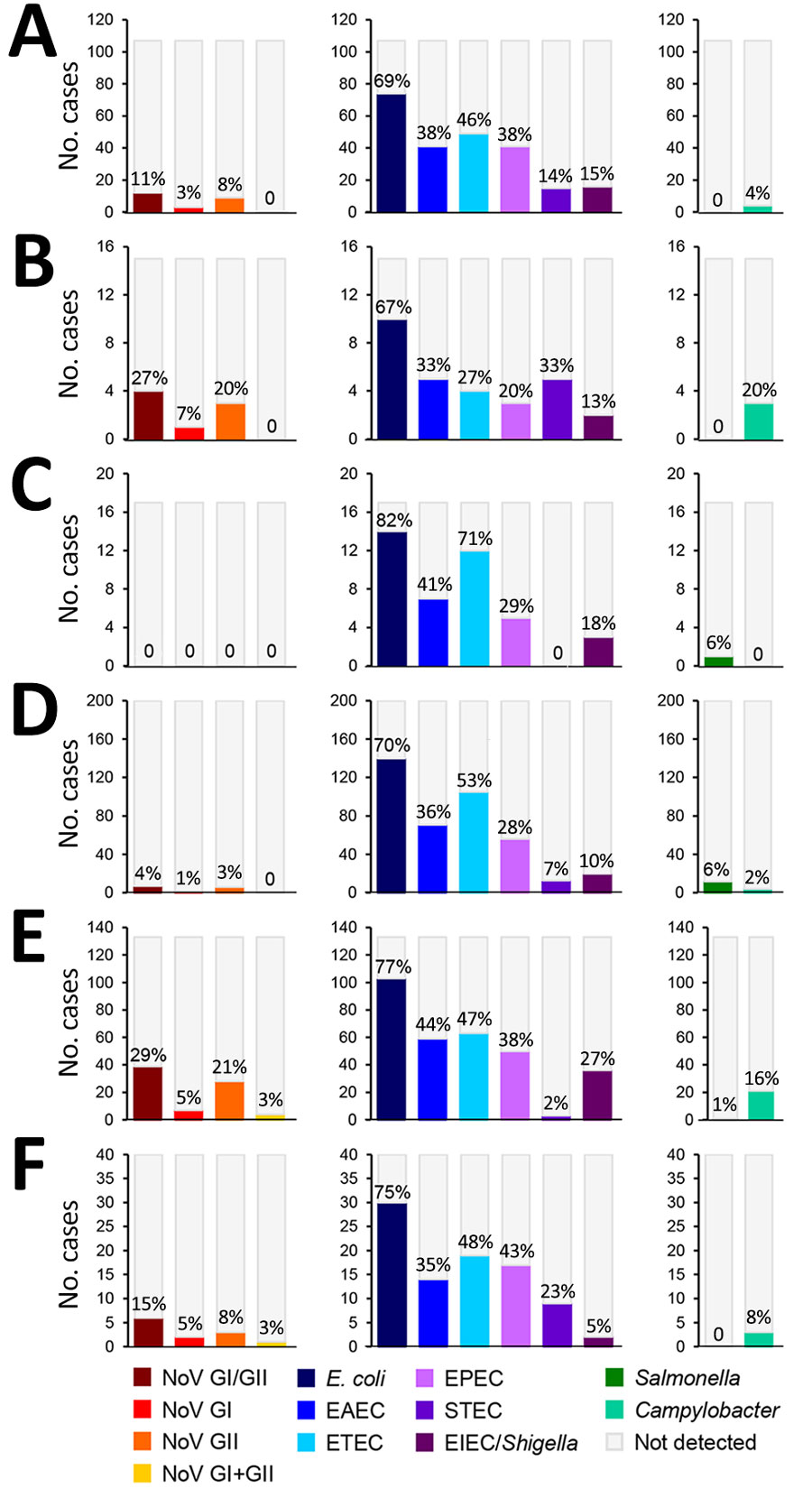Etiology and Epidemiology of Travelers’ Diarrhea among US Military and Adult Travelers, 2018–2023
Melissa S. Anderson, Evelyn W. Mahugu, Hayley R. Ashbaugh, Aaron G. Wellbrock, Maia Nozadze, Sanjaya K. Shrestha, Giselle M. Soto, Rania A. Nada, Prativa Pandey, Mathew D. Esona, Daniel J. Crouch, Michelle Hartman-Lane, and Hunter J. Smith

Author affiliation: Naval Health Research Center, San Diego, California, USA (M.S. Anderson, A.G. Wellbrock, M.D. Esona, D.J. Crouch, M. Hartman-Lane); General Dynamics Information Technology, San Diego (M.S. Anderson, A.G. Wellbrock); Armed Forces Health Surveillance Division, Silver Spring, Maryland, USA (E.W. Mahugu, H.J. Smith); General Dynamics, Silver Spring (E.W. Mahugu); US Food and Drug Administration, Silver Spring (H.R. Ashbaugh); Walter Reed Army Institute of Research Europe-Middle East, Tbilisi, Georgia (M. Nozadze); Walter Reed Armed Forces Research Institute of Medical Sciences Research Unit Nepal, Kathmandu, Nepal (S.K. Shrestha); US Naval Medical Research Unit SOUTH, Lima, Peru (G.M. Soto); US Naval Medical Research Unit EURAFCENT, Cairo, Egypt (R.A. Nada); Canadian International Water and Energy Consultants Clinic, Kathmandu (P. Pandey).
Main Article
Figure 2

Figure 2. Enteric pathogens detected in a study of etiology and epidemiology of travelers’ diarrhea among US military personnel and adult travelers, 2018–2023. The study included travelers from the following countries: A) Honduras (n = 107); B) Peru (n = 15); C) Egypt (n = 17); D) Djibouti (n = 200); E) Nepal (n = 133); F) Georgia (n = 40). We consider the proportions from Peru, Egypt, and Georgia to be unstable (n < 40) and the results should be interpreted with caution. The y-axis and bars represent the number of times each pathogen was detected for each country. The percent positivity for each pathogen is listed above the corresponding bar in each graph. Percent positivity does not add up to 100% for each country because of the occurrence of coinfections. EAEC, enteroaggregative Escherichia coli; EIEC, enteroinvasive E. coli/Shigella; EPEC, enteropathogenic E. coli; ETEC, enterotoxigenic E. coli; g, genogroup; NoV, norovirus; STEC, Shiga-like toxin–producing E. coli.
Main Article
Page created: October 01, 2024
Page updated: November 11, 2024
Page reviewed: November 11, 2024
The conclusions, findings, and opinions expressed by authors contributing to this journal do not necessarily reflect the official position of the U.S. Department of Health and Human Services, the Public Health Service, the Centers for Disease Control and Prevention, or the authors' affiliated institutions. Use of trade names is for identification only and does not imply endorsement by any of the groups named above.
